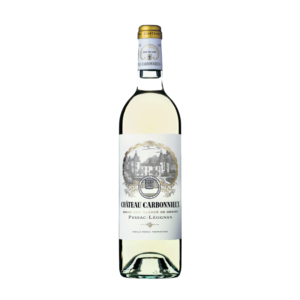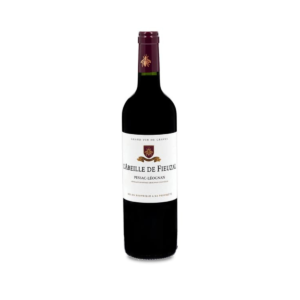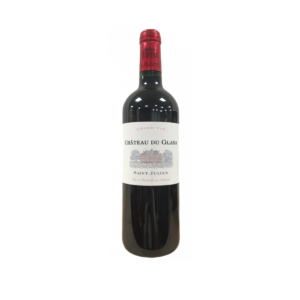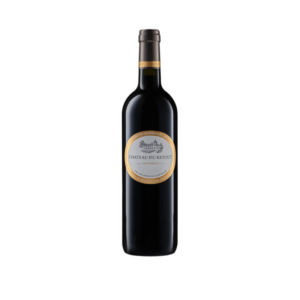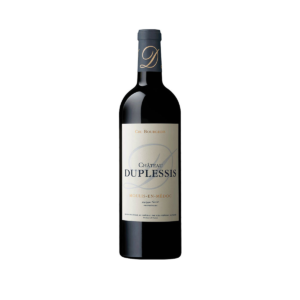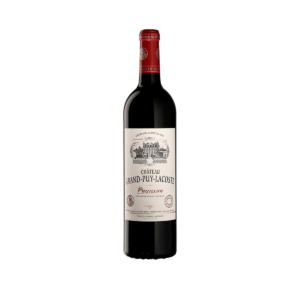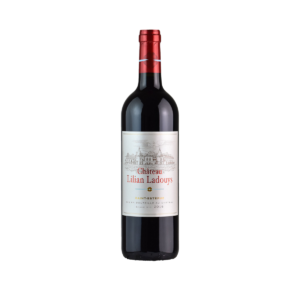Bordeaux
Chateau Bellegrave, Pauillac, 2018
Château Carbonnieux Blanc, Pessac-Leognan, 2012
Classified White Wine. Cru Classe de Graves in 1959.
"Fresh, lively lemon peel, grapefruit, vanilla bean and green apple on the nose is a treat, but it gets even better with the sweet, slightly honeyed, fresh citrus fruits with just a hint of vanilla in the zesty finish. The wine was produced from a blend of 70% Sauvignon Blanc and 30% Semillon. 91 Points" - 91/100, Jeff Leve, The Wine Cellar Insider
Château Carbonnieux white is a legendary wine. It is said that in the 18th century it was introduced to the Sultan of Constantinople’s palace because of its clarity and was called “mineral water from Carbonnieux”, thus defying the Islamic law.
The clay–limestone of Garonne gravel found in the Pessac-Léognan Appellation certainly produces the best dry white wines in the Bordeaux region. When young, Carbonnieux white wines are delightfully refreshing and pure with a fruity, floral intensity. When mature they develop hints of dried and candied fruits giving scope for a large range of gastronomic pairings. The batches which will form part of this “cru classé” will be blended so as to induce an excellent complicity between the grape varieties. The chosen Semillon grapes will add structure to the liveliness of the Sauvignon grapes by giving them roundness and volume on the palate.
Serving temperature : 12 – 14°C
Cellaring advice : 4 – 8 years
Wine and food pairing : raw or cooked fish, seafood, foie gras, white meat, exotic dishes, cheese, fruit desserts…
We advise storing these wines in a cool dark place at a consistent temperature and humidity level.
In spite of the care taken in the winemaking process, white wines remain more fragile than red wines.
Professional Ratings
- Wine Enthusiast
This is pure fruitiness but with a tense, tight structure underneath.The fresh exterior is all citrus fruits and acidity, while behind lies a texture that demands aging. It’s impressive, rich and worth waiting for. Drink from 2018.
- Wine Spectator
Solidly built, with lemon pulp and grapefruit rind notes framing a rich core of creamed yellow apple and white peach. Nice minerality drives the finish. Barrel Sample: 90-93 Points
- Robert Parker's Wine Advocate
Another full-throttle 2012 dry white, this 2012 offers lots of honeysuckle notes as well as a full-bodied mouthfeel and beautiful purity, elegance and length. Lemon zest, grapefruit and subtle wood characteristics are found in both the aromatic and flavor profiles. Barrel Sample: 90-92 Points
Château de Fieuzal, L’Abeille de Fieuzal Blanc, Pessac Leognan, 2019
A well-known Irish businessman and a leading figure in the business world, Lochlann Quinn has also been recognised for his involvement in philanthropic activities and his commitment to education and the arts in his country. Moreover, as a “bon viveur”, he loves good food and good wines and since 2001 he has been the owner of Château de Fieuzal, a winery in the heart of the historic cradle of Bordeaux wines, at Pessac-Léognan. It is one of Graves’ oldest and largest Grands Crus and, like the 7 previous families that have gone before, the priority is to protect as much of the highly prized terroir as possible to produce their famous elegant white wines and opulent red wines.
The estate’s second wine, made in both red and white, is L'Abeille de Fieuzal. The white version is made with Semillon and Sauvignon Blancvarieties from a selection of young vines. Managed by the talented Stephen Carrier, a young winemaker who works meticulously in search of perfection, he manages to reflect the goodness of such an exceptional clay-limestone terroir. Traditional and environmentally friendly practices are used and, after being harvested by hand, the grapes are selected, destemmed and gently pressed. The resulting must undergoes temperature-controlled fermentation with native yeasts and, finally, the wine rests on its lees for 12 months in 225-litre oak barrels.
Under the name “L'Abeille” which means “the bee” in French and is a tribute to the Fieuzal family emblem, L'Abeille de Fieuzal Blanc is the white version of a wine that has earned the recognition of wine lovers for its unique expression of the Pessac-Léognan terroir. A wine that, like everything under the influence of savvy owner Quinn, is sure to be a success.
Château de Fieuzal, L’Abeille de Fieuzal Rouge, Bordeaux, 2019
Over the years, L’Abeille has developed a strong identity of its own. Crafted with the same careful attention as Château de Fieuzal, it is conceived for light-hearted, easy-going enjoyment. Its fruit stems from the same vines as the first wine, grown with the same degree of care and preserving Fieuzal’s unique combination of freshness and finesse. L’Abeille red is majority Merlot, therefore delicately smooth whilst being juicy, fruity, and full of character.
Chateau de l’Hospital, La Dame de L’Hospital, Graves 2019
The Dame de l'Hospital Graves Rouge from Château de d'Hospital in Bordeaux reveals a dense purple color in the swirled glass. This French cuvée flatters in the glass wonderfully distinguished notes of plums and sour cherries. This is joined by hints of toasted wood.
The Château de d'Hospital Dame de l'Hospital Graves Rouge presents itself pleasantly dry to the wine enthusiast. This red wine never appears coarse or meager, as one might expect from a wine in the high quality wine range. On the tongue, this powerful red wine is characterized by an incredibly silky texture. Due to the balanced fruit acidity, the Dame de l'Hospital Graves Rouge flatters with a soft mouthfeel without lacking freshness. The final of this youthful red wine from the wine-growing region of Bordeaux finally thrills with beautiful reverberation.
Château du Glana, Saint-Julien, 2018
Еhe Saint Julien from the pen of Château du Glana from Bordeaux offers a bright purple color in the swirled glass. At the edge also shows a color transition to garnet red. The first nose of Saint Julien shows of blackberries, black currants and blueberries. The fruity hints of the bouquet are joined by cinnamon, black tea and gingerbread spice.
This wine delights with its elegantly dry flavor. It was bottled with exceptionally low residual sugar. This is a true quality wine, which clearly stands out from simpler qualities and so this Frenchman naturally enchants with the finest balance despite all dryness. Taste does not necessarily need sugar. On the tongue, this balanced red wine is characterized by an incredibly dense texture. In the finish, this well storable red wine from the wine-growing region of Bordeaux finally inspires with considerable length. There are again hints of black currant and blueberry.
Chateau du Retout, Haut-Medoc, 2018
68.5% Cabernet Sauvignon, 24.5% Merlot and 7% Petit Verdot planted here, the vines grow on a gravel ridge, close to Lamarque, where one can catch a ferry across the Gironde estuary to Blaye. Great care is taken in the vineyards, with ploughing between the rows and only natural fertiliser made from horse manure and organic waste from the vines used. This 2018 is a truly appetizing bottle, with aromas of ripe damson and plum, very pure. There is a lovely fleshy texture, with fine tannins and super length to finish.
Château Duplessis, Château Duplessis , Bordeaux 2015
Producer
PHILIPPE FERRIER
Moulis-en-Médoc is nestled on the Left Bank, between the cru appellations of Margaux and Saint-Julien. This lesser-known vineyard area, grown on similar soils of gravel and limestone over deeper clays and silt, can offer great value. The Château Duplessis 2018 vintage has attractive fresh and baked fruit aromas with earthy, spicy undertones. The palate has good depth, brisk acidity, well integrated oak flavours and bold tannins
Chateau Grand-Puy-Lacoste, Pauillac, 2018
The 2018 Grand-Puy-Lacoste is fabulous, just as it was from barrel. Strong Cabernet inflections soar out of the glass, giving the wine a compelling aromatic profile laced with the essence of graphite, dried herbs, menthol and dark fruit. One of the most classic (for lack of a better word) wines in the Left Bank in 2018, Grand-Puy-Lacoste is super-impressive right out of the gate. Grand-Puy-Lacoste is ultimately a wine of tremendous class that remains restrained and aristocratic in breeding.
Chateau Guiraud, Sauternes, 2017
First Growth. Premier Cru Classe in 1855. Every autumn a microscopic fungus called le « Botrytis Cinerea » appears and transforms the grapes. This is the famous 'noble rot' that is Nature's gift to Chateau Guiraud. In autumn the grapes take on a dark colour which can even seem austere, but this 'noble rot' is a precursor of aromatic expression. Understanding this phenomenon is essential as only the grapes that have been perfectly concentrated by the Botrytis will be picked one by one.
Château La Prade, Côtes de Francs 2015
The 2015 Chateau La Prade is a great wine to enjoy and completely over delivers for the price. Overflowing with rich, dark fruits enveloped in satiny smooth tannins, this is an easy wine to pick for your Tuesday night drinker. As you probably know by now, 2015 in Bordeaux was an exceptional vintage with well ripened fruit and exceptional balance and freshness. The beauty of the vintage is the quality extends from the higher priced Classified Growths and Grand Cru Classe's to the more reasonably priced wines. A perfect example is this wine from Chateau La Prade which received a 92 Point score from James Suckling."
Château Lilian Ladouys, Saint-Estephe, 2018
When tasted, Lilian Ladouys always reveals a rich and crisp structure with ripe tannins and refined oak which melts into an explosion of fruit. It has the opulence and length of a Saint-Estèphe fine wine. Thanks to the appellation’s limestone-clay subsoils, its power is balanced out by a wonderful sensation of freshness.
Our top wine is matured for an average of 14 months in our superb barrel store (40-60% new oak depending on the vintage). Cabernet Sauvignon and Merlot make up the majority of the blend, with the proportions varying from one year to the next. They are supplemented by Petit Verdot and Cabernet Franc. The estate’s wines go into gravity-fed vats and undergo vinification with a partially gravity-based system, which is more sensitive to the integrity and subtleties of the grapes and the wine.


